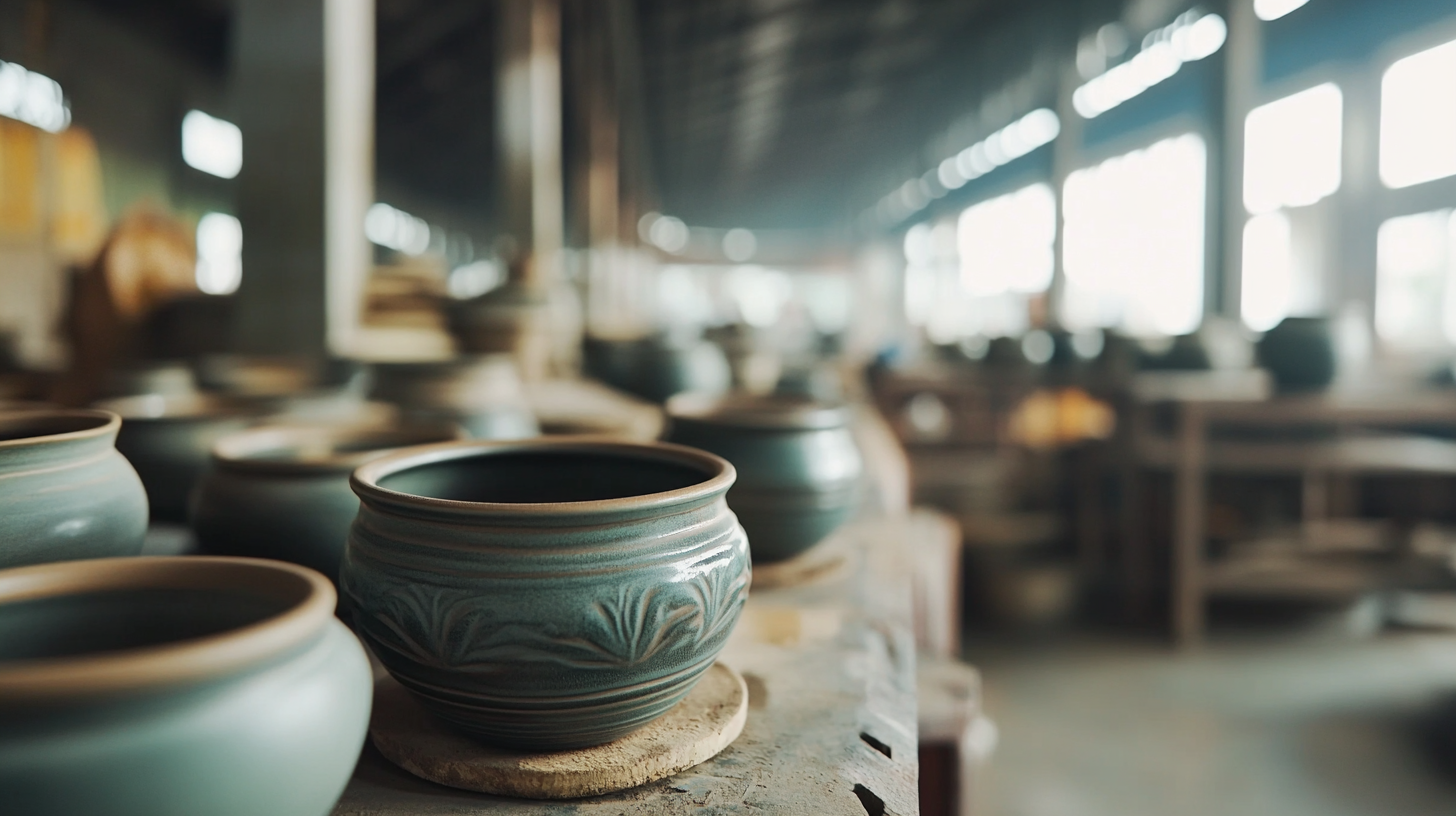In recent years, China's ceramics industry has garnered global attention for its exquisite craftsmanship and unparalleled quality, positioning itself as a leader in the market for high-end ceramics. With a rich history steeped in artistry and innovation, Chinese artisans have mastered the delicate balance of tradition and modernity, resulting in pieces that are not only functional but also aesthetically stunning. Among the standout brands that epitomize this dedication to excellence are those renowned for "Made Ceramics," which reflect a commitment to superior materials and meticulous production processes. This blog will explore the intricate journey of creating China's finest ceramics, examining the techniques, tools, and artistry involved in their production, as well as the factors contributing to their international acclaim and demand. Join us as we delve into the world of ceramics that merge heritage with contemporary design, capturing the essence of what makes China's ceramics a dominant force on the global stage.

The journey of Chinese ceramics is a testament to the evolution of craftsmanship, reflecting deep cultural significance and sophisticated artistry. Dating back thousands of years, the origins of Chinese ceramics can be traced to the Neolithic period, where early potters began experimenting with clay. Over the centuries, these humble beginnings gave rise to exquisite porcelain, famous for its beauty and strength. The craftsmanship involved intricate techniques that were passed down through generations, leading to the distinctive styles recognized worldwide today.
In recent decades, the landscape of Chinese ceramics has transformed dramatically. Modern production techniques have embraced innovation while respecting traditional methods, enabling mass production without compromising quality. Brands like Best Made Ceramics exemplify this transition, offering products that marry timeless designs with contemporary functionality. This blend of old and new not only amplifies the global presence of Chinese ceramics but also reinforces China's dominance in the international market. As they continue to capture global interest, Chinese ceramics remain a symbol of both heritage and modernity, showcasing the enduring legacy of this ancient craft.
| Category | Quality Indicator | Production Method | Market Reach | Cultural Significance |
|---|---|---|---|---|
| Porcelain | High Durability | Kiln Firing at High Temperatures | Worldwide | Symbol of Chinese Heritage |
| Stoneware | Waterproof and Sturdy | Reduced Temperature Firing | Asia, Europe | Used in Daily Life |
| Earthenware | Porous; Ideal for Decoration | Low-Temperature Firing | Local and Niche Markets | Artistic Expression |
| Bone China | Lightweight and Translucent | Firing with Bone Ash | High-End Markets | Luxury and Status |
China has secured its position as the leading producer of ceramics globally, driven by a combination of quality standards and cost competitiveness. A comprehensive comparative analysis reveals that Chinese ceramics not only meet but often exceed the quality benchmarks set by global counterparts. The UK ceramic tableware market is poised to experience substantial growth, with projections indicating it will surpass previous records due to rising demand. This surge emphasizes the importance of quality in ceramics, where precise manufacturing processes and stringent quality controls are paramount.

Furthermore, the global China clay market is forecasted to witness steady growth between 2025 and 2035, influenced by increasing demand across multiple sectors including ceramics, paper, and rubber. The implementation of advanced technologies in production, such as AI-assisted design methods, is significantly enhancing the quality and creativity of ceramic products. This infusion of innovation combined with a skilled labor force and a robust supply chain positions China's ceramics industry favorably in the competitive landscape, ensuring that it continues to dominate the global market.
In the world of ceramics, China's reputation for exquisite craftsmanship is unparalleled. Best Made Ceramics stands at the forefront, showcasing the ancient techniques that contribute to the creation of superior quality pieces. One of the key practices is the meticulous selection of raw materials, where artisans source high-quality clay and local minerals to ensure the integrity and durability of each piece. The significance of this step cannot be overstated, as it forms the foundation upon which the beauty and functionality of ceramics are built.

Tips for aspiring ceramicists emphasize the importance of learning these traditional techniques. Understanding glazing methods, for instance, can transform a simple piece into a stunning work of art. Experimenting with various firing temperatures can also yield unique effects, enhancing the aesthetic appeal of the ceramics. Additionally, incorporating regional styles into personal work can create a distinctive identity, setting one’s creations apart in a competitive market.
Attention to detail during the shaping process is crucial. Hand craftsmanship allows for unique variations that machine-made pieces simply cannot replicate. This individuality is what often draws collectors and connoisseurs to Chinese ceramics, underscoring the importance of passion and precision in every stroke and curve. By embracing these techniques, ceramicists can contribute to the legacy of excellence upheld by Best Made Ceramics and make their mark in the global arena.
China’s ceramic industry has undergone a significant transformation in recent years, driven by a culture of innovation that has redefined quality and production methods. With advanced technologies and sustainable practices, manufacturers in China are now producing ceramics that not only meet but exceed global standards. By integrating modern design concepts and eco-friendly materials, Chinese ceramics are appealing to a broader market while maintaining traditional craftsmanship. This fusion of old and new has positioned China as a formidable player in the global ceramic landscape.
Moreover, innovation in China’s ceramic sector is not limited to product development; it also extends to marketing strategies and global distribution networks. Companies are leveraging digital platforms to reach international consumers, showcasing their unique products and storytelling capabilities. This approach has significantly improved brand visibility and consumer engagement, allowing Chinese ceramics to penetrate markets that were previously difficult to access. As a result, the impact of innovation in this industry is palpable, enabling China to assert its dominance and redefine the narrative around quality ceramics on the world stage.
China's ceramics have long been celebrated for their exquisite quality and craftsmanship, but in today's world, the focus has shifted toward sustainability practices that ensure the longevity of this rich tradition.
Balancing quality production with environmental responsibility is now more crucial than ever for Chinese ceramists. By adopting eco-friendly techniques and materials, manufacturers are finding ways to create stunning pieces that minimize negative impacts on the planet.
One effective tip for achieving sustainability in ceramics is the use of natural pigments and glazes. This not only enhances the aesthetic appeal but also reduces harmful emissions during production. Furthermore, integrating renewable energy sources, such as solar or wind power, can substantially lower the carbon footprint of manufacturing processes. As consumers become increasingly conscious of their choices, embracing such sustainable practices can enhance the marketability of products.
Another essential aspect is waste reduction during production. Implementing a circular economy approach, where waste materials are repurposed, can lead to significant gains in both efficiency and sustainability. By innovating with leftover clay and recycling packaging materials, manufacturers can contribute to a more sustainable future while maintaining the high standards of quality that define China’s finest ceramics.
